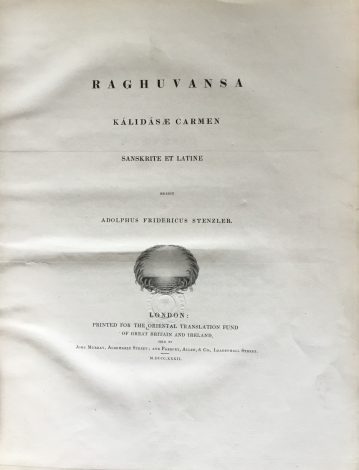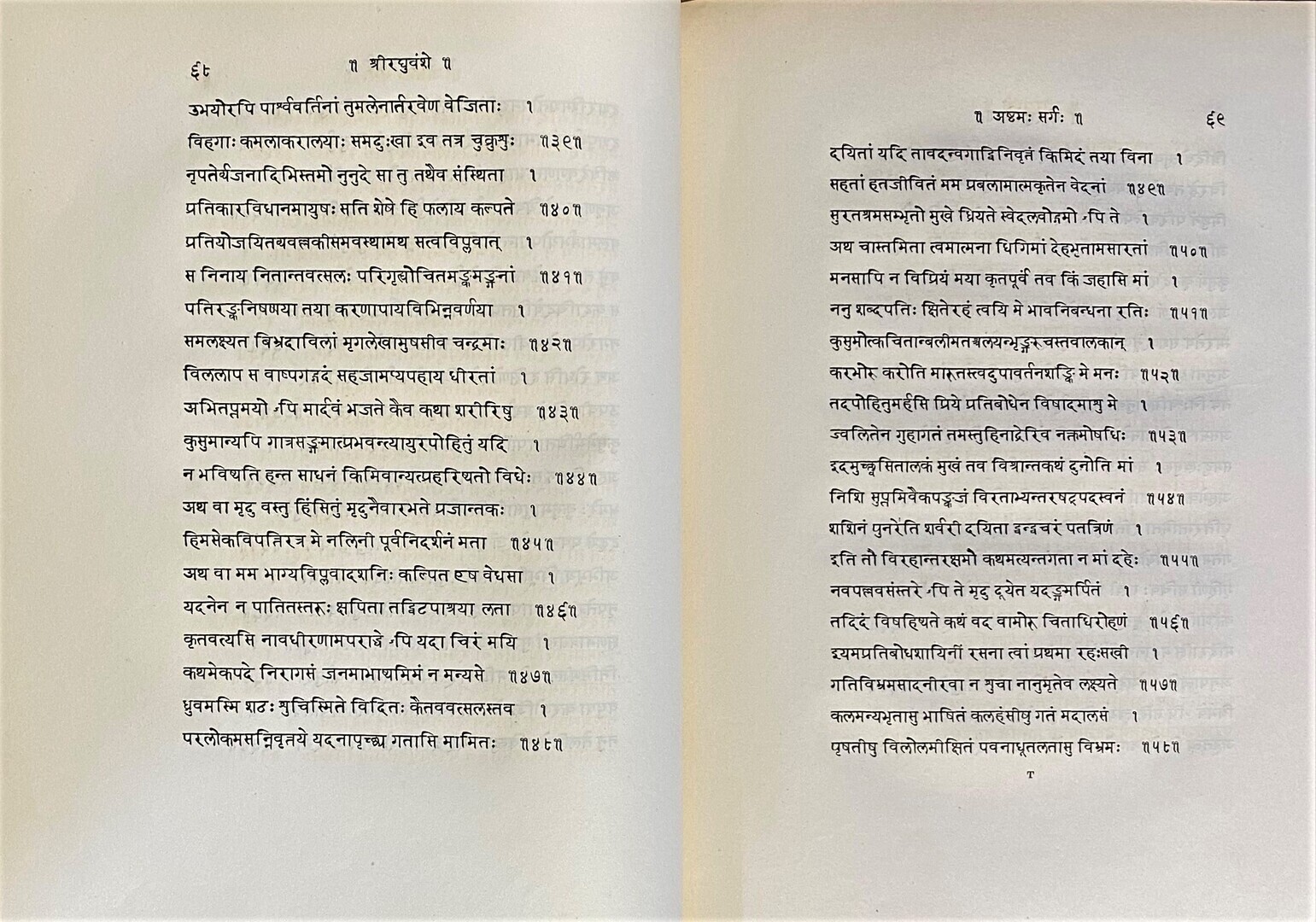Raghuvansa, Kalidasae Carmen, Sanskrite et Latine.
Stenzler, Adolphus Frideridcus.
Synopsis
Kalidasa’s Raghuvamsha tells the story of the family of Dileepa and his descendants, including the conqueror Raghu. The warrior Raghu leads a military expedition to Transoxiana. He defeats and subjugates local peoples along the way (presumably on his march through Central Asia) until he reaches the Vankshu, as the ancient Indians called the Oxus River. There, Raghu’s army battles the Hepthalites, or White Huns, whom the Indians called Hunas and Mlecchas (barbarians). The Hepthalites are defeated, and the Raghuvamsha boasts of “The exploits of Raghu, whose valor expressed itself amongst the husbands of the Huna women, became manifest in the scarlet color of their cheeks.”
The 6th century Gothic (or Alanic) historian Jordanes wrote that the Western Huns, upon the death of Attila, “disfigured their faces horribly, with deep wounds, so that the gallant warrior should be mourned not with the lamentations and tears of women, but with the blood of men.” A similar custom was observed among the Kutrigurs, Turks, Magyars, and Tajikscentral ais, oxus.
After crossing the Oxus, Raghu and his army encountered the Kambojas, an ancient Indo-Scythian people often mentioned in Indian texts. The Kambojas submitted to Raghu and offered him gifts and treasures. Evidently, the Kambojas dwelt in the vicinity of the Pamirs. Kalidasa describes the preponderance of walnut trees in the Oxus country, this particular region is still known for the cultivation of walnuts.








